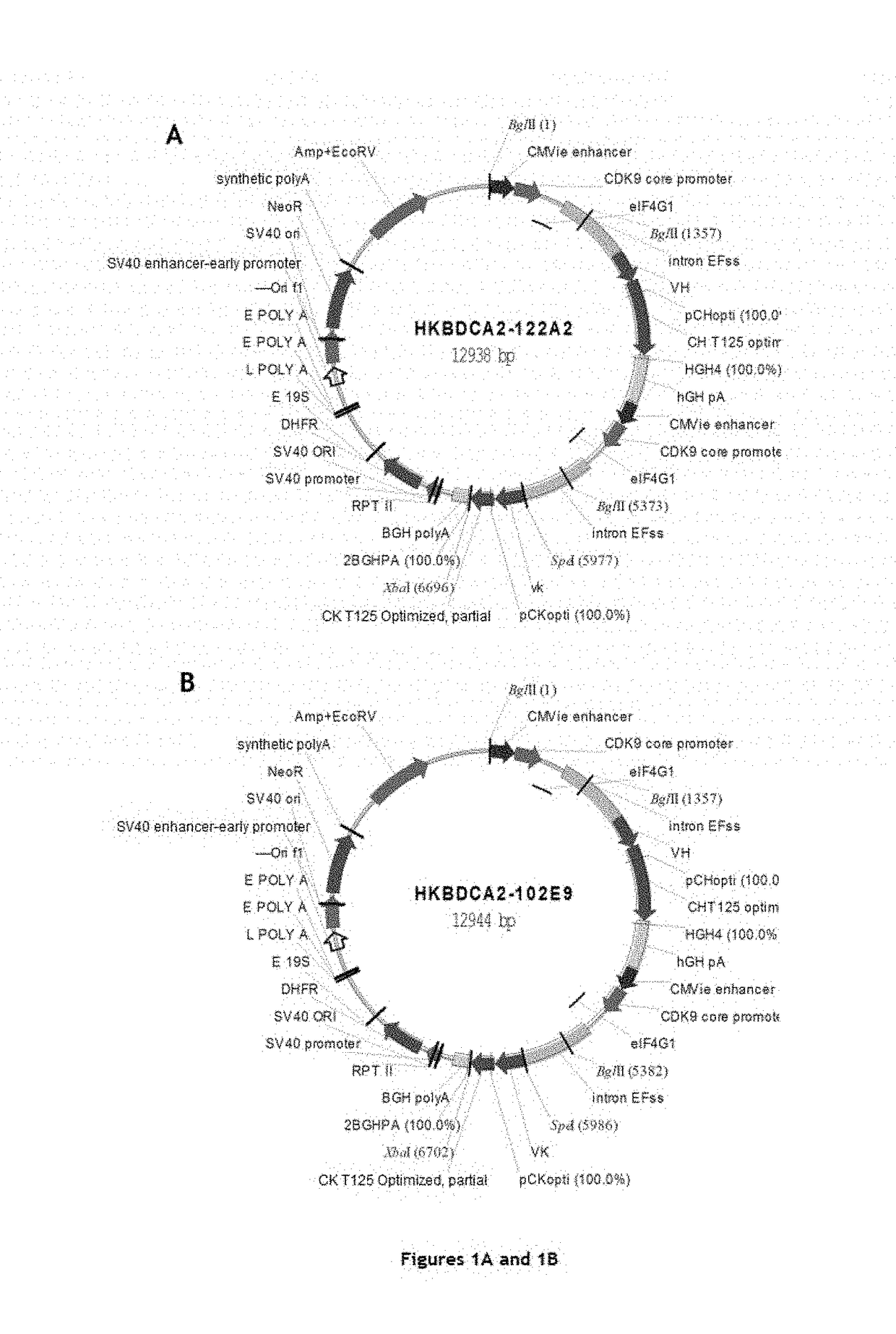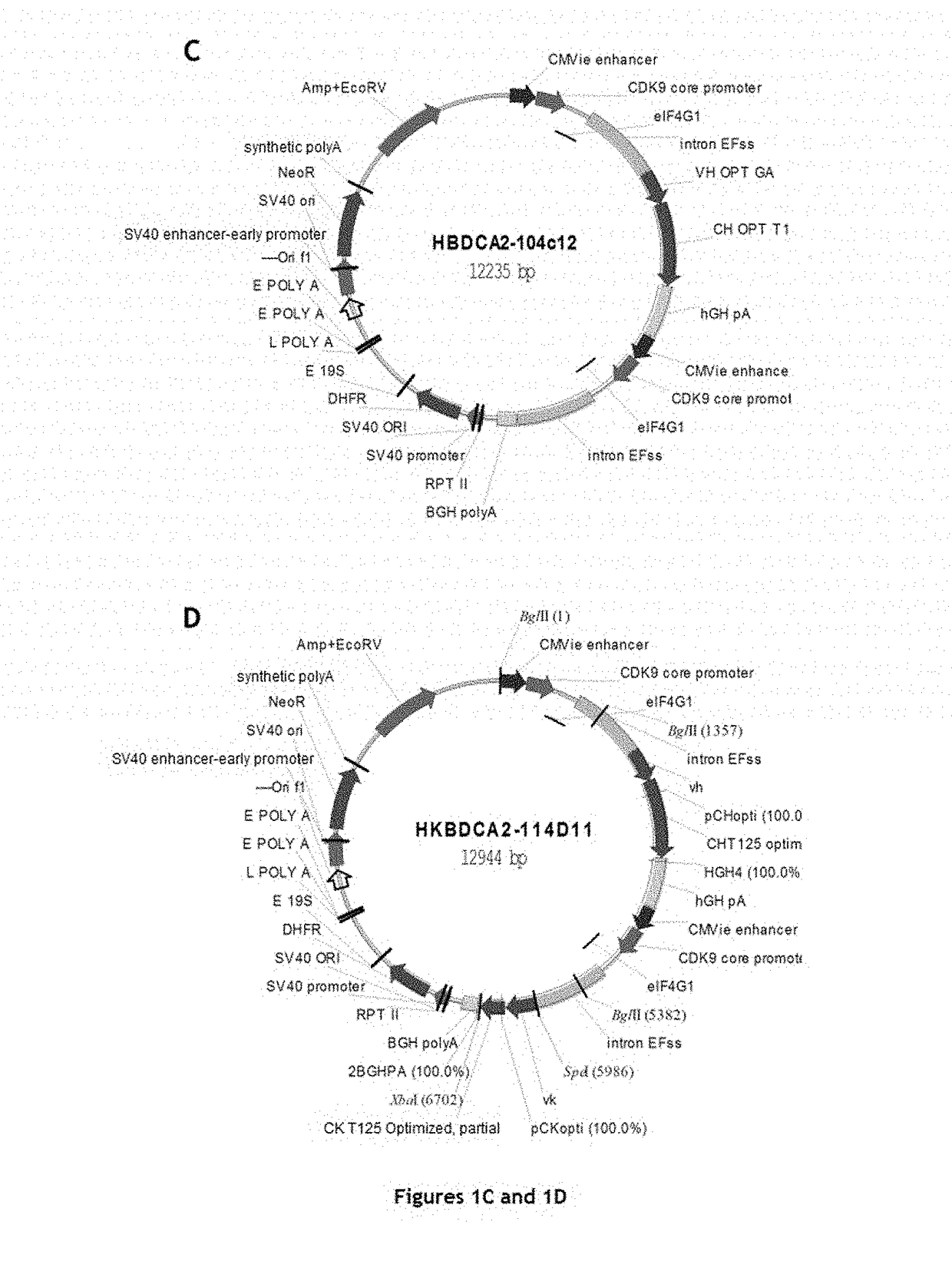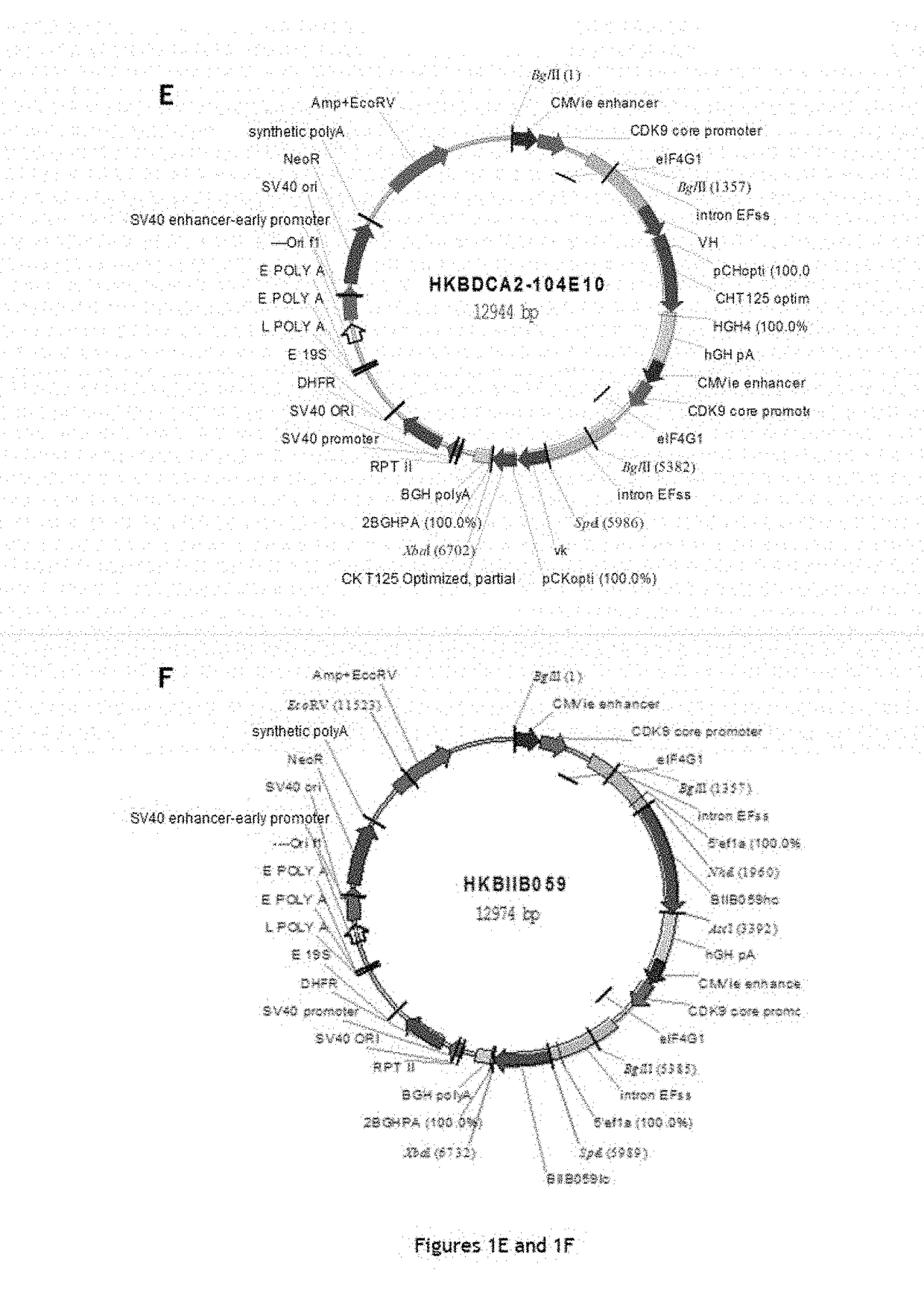Anti-cd303 monoclonal antibodies
a monoclonal antibody and anti-cd303 technology, applied in the field of therapeutic antibodies, can solve the problems of increasing the risk of opportunistic infections, not enabling long-term survival, frequent and early relapse, etc., and achieve the effect of inhibiting secretion and increasing productivity
- Summary
- Abstract
- Description
- Claims
- Application Information
AI Technical Summary
Benefits of technology
Problems solved by technology
Method used
Image
Examples
example 1
on and Structure of Five Chimeric Antibodies and a Humanized Antibody of the Prior Art
[0220]Five chimeric monoclonal antibodies with murine variable regions and human constant regions of IgG1 type were generated and their structures characterized. In addition, humanized antibody B11B059, the sequences of which are described in the application WO2014 / 09339, was reproduced for comparison with the chimeric antibodies according to the invention.
Materials and Methods
[0221]Sequencing of the Heavy and Light Chains from Murine Hybridomas
[0222]Total RNA from each hybridoma was extracted using the NucleoSpin RNA II Kit (column purification) from Macherey-Nagel.
[0223]The mRNA was converted to cDNA and the heavy and light chains of the antibody were amplified using the GeneRacer Kit (Invitrogen) and cloned into an M13 vector. Bacteria were then transformed by the M13 vector and clones positive for the M13 sequences were sequenced.
Determination of the Heavy Chain VH, DH, JH Segments and the Ligh...
example 2
l Properties of the Five Chimeric Antibodies and of an Antibody Corresponding to the Antibody (BIIB059) Described in the Application WO2014 / 09339
[0244]The five chimeric monoclonal antibodies, with murine variable regions and human constant regions of IgG1 type, and directed against the CD303 antigen, generated in Example 1 were tested for various biological properties. In certain cases, these properties were compared to those of an antibody corresponding to the antibody (B11B059) described in the application WO2014 / 09339 (same sequences and same production line).
Materials and Methods
Tested Antibodies
[0245]Tested antibodies are those prepared as described in Example 1.
Antigen-Binding
[0246]Binding to CD303+ cells (Fcγ chain-CD303 Jurkat, CAL-1, and CAL-1 overexpressing CD303)
[0247]Various types of cells expressing CD303 at various antigen densities were used:[0248]1. Fcγ chain-CD303 Jurkat cells, which express about 25,000-35,000 CD303 molecules / cell;[0249]2. CAL-1 cells, as described...
example 3
on and Characterization of Humanized Antibodies Derived from Chimeric Antibodies 122A2 and 102E9
Materials and Methods
Definition of Humanized Sequences
[0292]A work of humanization in silico, making use of the IMGT.org database and modeling, was undertaken to define various sequences of the variable portions of the heavy and light chains containing “human amino acids” instead of their murine homologues.
[0293]For each VH or VL domain, the human gene encoding a VH or VL domain having the amino acid sequence closest to that of the murine sequence of the original chimeric antibody was determined. The closest human VH and VL genes determined for chimeric antibodies 122A2 and 102E9 are mentioned in Table 28 below:
TABLE 28The human VH and VL genes closest to the murine sequencesof the original chimeric antibody (IMGT nomenclature).VHVL122A2IGHV1-2*02IGKV1-33*01102E9IGHV7-4-1*02IGKV1-9*01
[0294]For each VH and VL domain, based on an alignment between the murine amino acid sequence of the origi...
PUM
| Property | Measurement | Unit |
|---|---|---|
| concentration | aaaaa | aaaaa |
| concentration | aaaaa | aaaaa |
| concentration | aaaaa | aaaaa |
Abstract
Description
Claims
Application Information
 Login to View More
Login to View More - R&D
- Intellectual Property
- Life Sciences
- Materials
- Tech Scout
- Unparalleled Data Quality
- Higher Quality Content
- 60% Fewer Hallucinations
Browse by: Latest US Patents, China's latest patents, Technical Efficacy Thesaurus, Application Domain, Technology Topic, Popular Technical Reports.
© 2025 PatSnap. All rights reserved.Legal|Privacy policy|Modern Slavery Act Transparency Statement|Sitemap|About US| Contact US: help@patsnap.com



